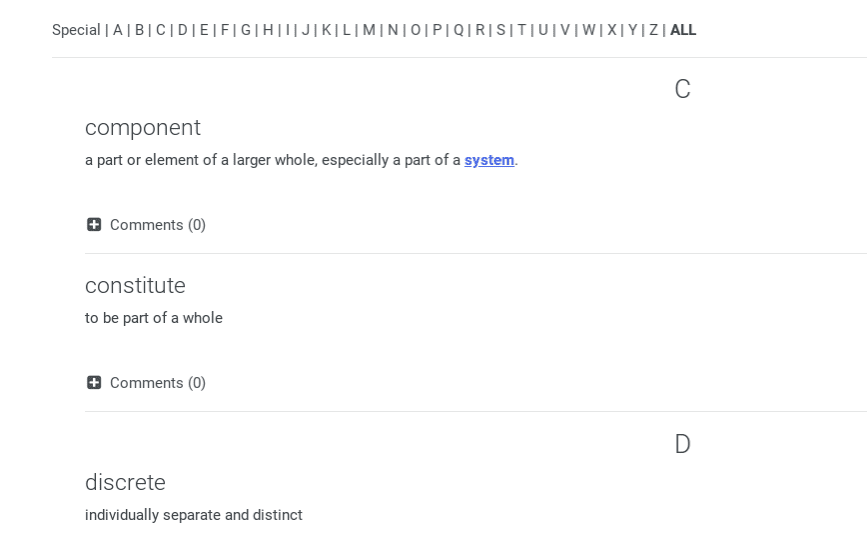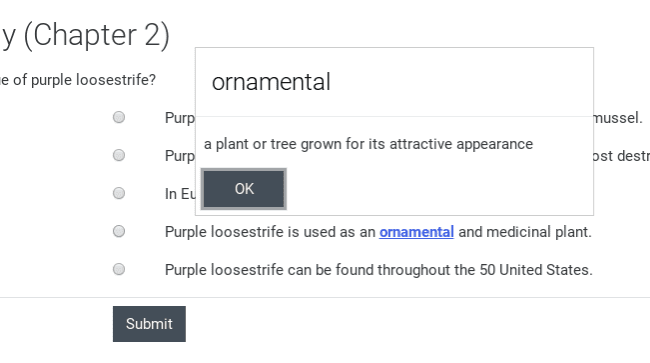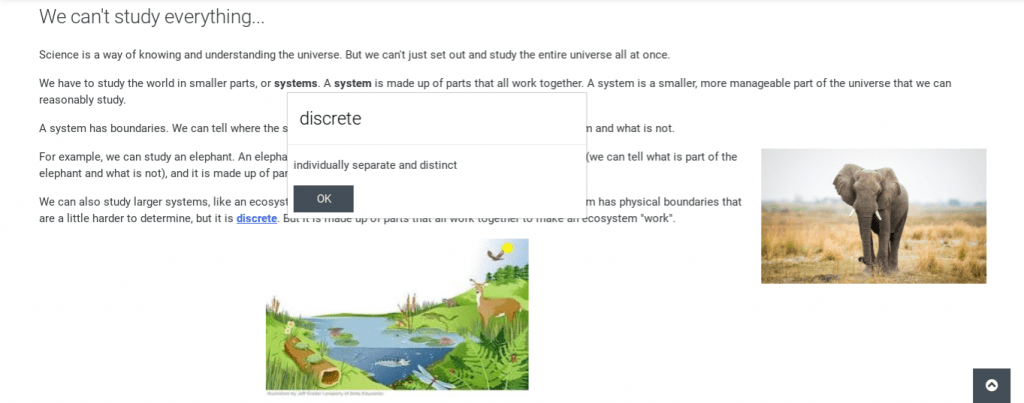Supporting Students in Learning Vocabulary
Supporting students in their acquisition of new vocabulary is one of the most critical components of our teaching. Teachers who use Moodle (iLearn) have an advantage in this sense. Creating a glossary and setting it to auto-link vocabulary allows a teacher to enter terms and definitions (even pictures!) to help students make meaning of the text within other parts of a Moodle (iLearn) course.
In one of my courses, for instance, I have two glossaries: one for Tier II vocabulary and one for Tier III vocabulary. (Note that separate glossaries can have different settings. For instance you might not want to auto-link the Tier III vocabulary since it will likely appear on assessments in the course, but you may want to link the Tier II vocabulary since there would not be questions specifically on one of these terms.)

Students can use these glossaries for reference, obviously. Each glossary contains an alphabetized list of the words that have been entered.

Simply entering a word and its definition in the auto-linked glossary allows students to see a link anywhere the word appears throughout the course. Clicking on the link produces a pop-up with the definition associated with the word, so students can be reminded of the sense of the word and quickly move on to making meaning of the text.
This can be especially helpful to support Learners of English as they encounter not only domain-specific vocabulary, but more common terms they may not know as well as others. Take the word ornamental, for instance, as it appears in the text of a question below:
Here’s another example of another term, discrete. Note that this is a term in the Tier II vocabulary glossary, while the term system is a member of the Tier III vocabulary glossary — but it is set not to be auto-linked, and therefore students do not have the option to click for a definition.

If we’re serious about helping students learn vocabulary, we’ll do everything we can to provide supports for our students. If you use Moodle (iLearn), this one’s a no-brainer. If you’re not using Moodle, there are many other ways you can support students that can mimic the features of Moodle (iLearn), as long as you’re willing to invest the time to manually enter links (like I did for the word component above).
